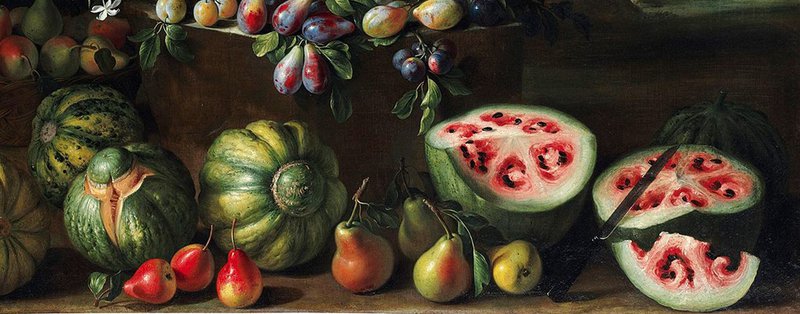Thought to have originated in central and southern Africa, watermelons were introduced into Europe by the mid-tenth century; chiefly they were cultivated in Mediterranean countries. The first color sketches of watermelons in Europe are found in medieval manuscripts of the Tacuinum Sanitatis, a guide to health living based on an eleventh-century Arabic text by Ibn Butlan of Baghdad.[1]

Giovanni Stanchi, Still Life with Watermelon, late 17th century (privately owned)
On 21 August 1770, Leopold Mozart wrote to his wife from Bologna:
- Praise be to God, we are happy with our figs, melons and other fruit, which we’ve been eating in great moderation. Each evening, around 2 hours before table, we eat a fruit that I’ve never seen except in paintings and that tastes like cucumber, it’s a large round fruit with green peel, when you open it up and cut it into pieces, it looks very appetizing as it’s pale red inside. People call this fruit anguria, also gourd or pumpkin, but these are good pumpkins, not the wild sort. You eat them with sugar and cinnamon.
[1] See Kenneth F. Kiple and Kriemhild Coneè Ornelas, The Cambridge World History of Food (Cambridge, 2000), i.306-30, and Kathleen Hoeniger, ‘The Illuminated Tacuinum Sanitatis Manuscripts from Northern Italy ca. 1380-1400: Sources, Patrons, and the Creation of a New Pictorial Genre’ in Visualizing Medieval Medicine and Natural History, 1200-1550, eds. Jean Ann Givens, Karen Reeds and Alain Touwaide (Aldershot, 2006), 51-81.